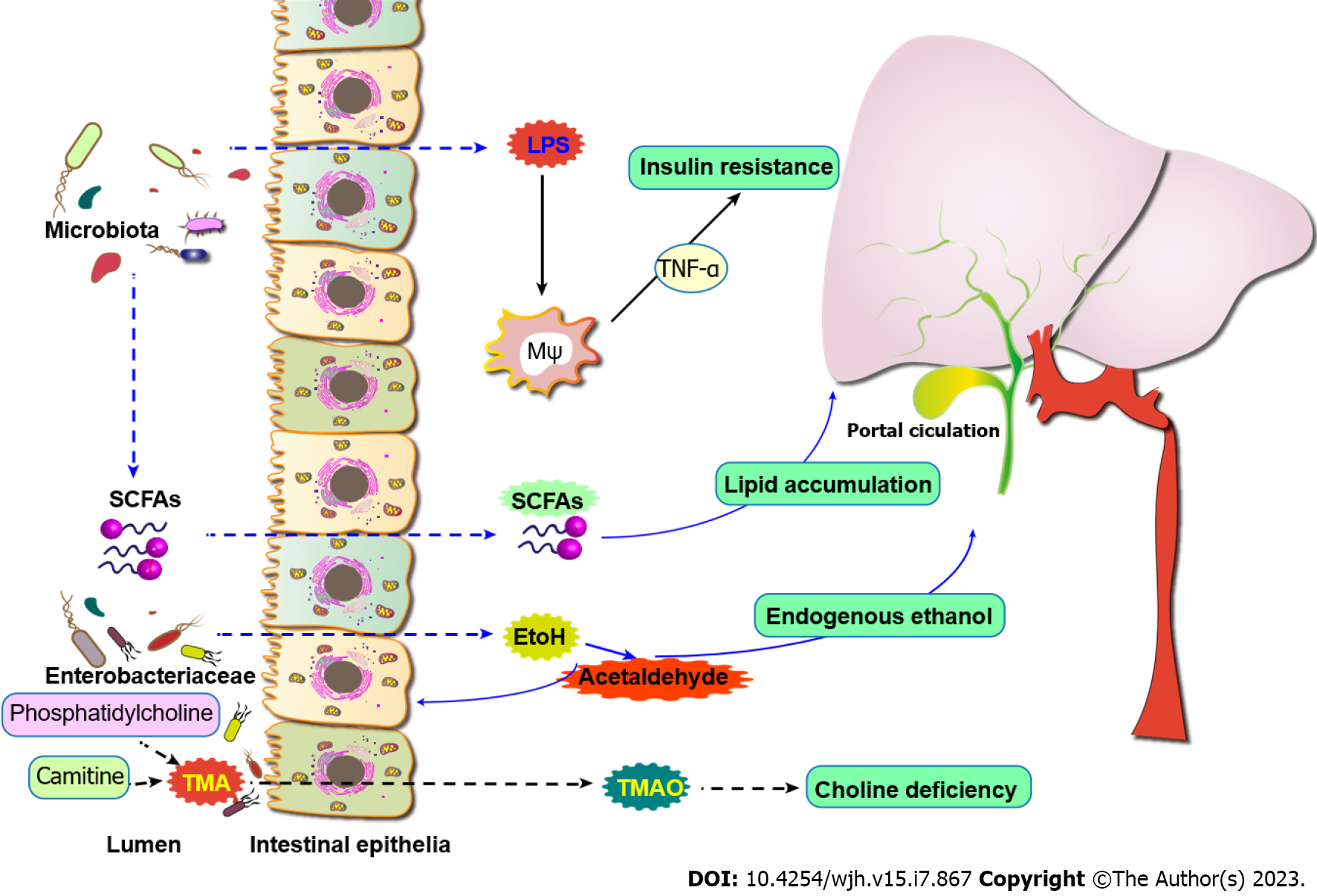Copyright
©The Author(s) 2023.
World J Hepatol. Jul 27, 2023; 15(7): 867-882
Published online Jul 27, 2023. doi: 10.4254/wjh.v15.i7.867
Published online Jul 27, 2023. doi: 10.4254/wjh.v15.i7.867
Figure 1 Gut microflora can affect several factors related to the development of metabolic-associated fatty liver disease.
These effects lead to the production of free fatty acids, insulin resistance, and impaired bile secretion in the liver, respectively. In addition, changes in intestinal microflora may lead to increased intestinal permeability, and microbial-derived compounds are transferred from the intestine to the liver through the portal vein, resulting in changes in pro-inflammatory signals, metabolism, and toxicity. Finally, ethanol and its toxic derivative acetaldehyde aggravated hyperoxidative stress and choline deficiency in hepatocytes. EtOH: Ethanol; LPS: Lipopolysaccharides; SCFAs: Short chain fatty acids; TNF-α: Tumor-necrosis factor; TMAO: Trimethylamine N-oxide.
- Citation: Guo GJ, Yao F, Lu WP, Xu HM. Gut microbiome and metabolic-associated fatty liver disease: Current status and potential applications. World J Hepatol 2023; 15(7): 867-882
- URL: https://www.wjgnet.com/1948-5182/full/v15/i7/867.htm
- DOI: https://dx.doi.org/10.4254/wjh.v15.i7.867









